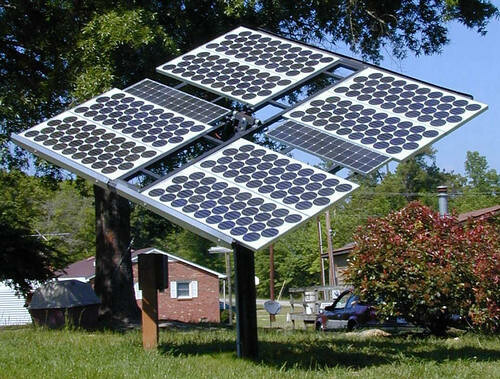:}
Community Energy Systems is a nonprofit 501c3 organization chartered in Illinois in Sangamon County. As such we are dependent on public donations for our continued existence. We also use Adsense as a fundraiser. Please click on the ads that you see on this page, on our main page and on our Bulletin Board (Refrigerator Magnets) and you will be raising money for CES. We say a heartfelt THANK YOU to all who do.
:}
It’s Jam Band Friday ( http://www.youtube.com/watch?v=IJbFVJvRqOQ&feature=PlayList&p=DA3BD18D4E01082D&playnext=1&playnext_from=PL&index=16 )
Until I realized that all the capitol involved for social investments the size of a nuclear powerplant or a huge wind farm of the same megawattage was controlled by people who had a vested interest in one or the other. The simple way to put this is that which Energy Infrastructure we have is a political decision. That means that we will never have an Earth Friendly Economy until we have Earth Friendly governments. Don’t get me wrong people can make a difference. They can try to stop some of the damage being done. They can change themselves and their children to adopt Earth Friendly behaviors. I do not believe that they should have to give up mowing their grass, or back yard barbeques however because it is the big polluters that are causing the problems. But let’s look at the literature:
I know I know the New York Times is hardly literature and the “difficulty” of changing behavior is well understood by anyone who has ever tried to get someone to quit sucking their thumb or give up their bankey. But it is helpful to show some examples:
:}
How Understanding the Human Mind Might Save the World From CO2
What will solve climate change? Will it be technology? Policy? A growing number of researchers and activists say it’s what’s behind it all: people. And understanding them is vital to addressing climate change.The problem is that people don’t understand people very well, research shows.
In the 1970s, a researcher at Virginia Polytechnic Institute and State University named Scott Geller and colleagues conducted a workshop in residential energy efficiency and then measured its impacts. A newspaper advertisement recruited 40 participants on a first-come-first-served basis, and the workshop lasted three hours. Before and after the workshop, subjects took surveys measuring how much they knew and cared about energy efficiency. The change was significant — participants significantly knew and cared more about the issues after the workshop than before.
But when the researchers looked at the actual actions that people took afterward, the results were discouraging. One person lowered the temperature on the hot water heater. Two additional people had installed insulating blankets around their hot water heaters — but they had done it before the workshop. Eight people did install low-flow shower heads — after all 40 participants had been given the low-flow shower heads at the workshop.
If these were people who cared enough about energy efficiency to attend a three-hour workshop, what hope was there for people who didn’t?
:}
Of course since this talk is being given by famous environmentalist Doug McKenzie-Mohr who believes that social marketing is the answer to the question, “how do you change people’s behavior”, I will put up a few more cuts from this article because some of it is intriguing . But infrastructure and public policy are controlled by the moneyed elites and the government officials. Good luck with the social marketing scheme with them.
:}
( http://www.youtube.com/watch?v=DZVzH5yBFQA )
While the study, spurred by the last energy crisis, was conducted in the 1970s, its lessons about human nature still apply today, said McKenzie-Mohr, a professor of psychology at St. Thomas University in Fredericton, New Brunswick, and author of the book “Fostering Sustainable Behavior: An Introduction to Community-based Social Marketing.”
dot dot dot
“Social psychologists have now known for four decades that the relationship between people’s attitudes and knowledge and behavior is scant at best,” said McKenzie-Mohr. Yet campaigns remain heavily focused on brochures, flyers and other means of disseminating information. “I could just as easily call this presentation ‘beyond brochures,'” he said.
dot dot dot
Bridging the gap between attitudes and action
To bridge the gap between attitudes and action, people must first address the barriers that stand in the way of action, McKenzie-Mohr said.
dot dot dot
As the U.S. Senate debates sweeping climate legislation and leaders express increasing doubts that next month’s Copenhagen climate negotiations will lead to a treaty, a poll conducted in October by the Pew Research Center for the People & the Press showed that only 57 percent of Americans believe that climate change is happening. Only 36 percent believe humans are the cause.
Individual behaviors can achieve fast, immediate impacts on greenhouse gas emissions, if they are implemented, presenters said. But Anthony Leiserowitz, director of the Yale Project on Climate Change and a leading expert on public opinion on climate change, said that what will have the most far-reaching effect is policy changes. And for that, public opinion is critical.
:}
( http://www.youtube.com/watch?v=oqeSUAlI5uI&feature=related )
As I said before…they always get around to the politicians and public policy WITHOUT talking about the moneyed elites that hide behind their hedgerow.
:}
McKenzie-Mohr gave an example of a town’s efforts to reduce idling at schools. After learning that air quality was something residents cared about, leaders of the effort placed signs by where parents parked to pick up their children from school. The signs had no effect. But when, instead, a person dressed as a public health official spoke to parents personally as they waited, the frequency of idling dropped by 32 percent, while the average length of idling dropped by 72 percent.
dot dot dot
Ultimately, McKenzie-Mohr, Leiserowitz and other speakers said, what the climate movement needs is vision — which it currently lacks.
“I think we have become very, very good at describing that we’re against. … We’re terrible at describing what we’re for. We’re against climate change, we’re against biodiversity extinction, we’re against land-use change, etc., we’re against pesticides … but what are we for?” Leiserowitz said.
For more on the same topic please see
http://www.cbsm.com/public/world.lasso
http://www.conservationpsychology.org/profiles/31/
:}
( http://www.youtube.com/watch?v=HSMW4Gwi0y0&feature=related )
Other approaches have been tried but they always “start from the bottom”…why because they are afraid of the “top” that’s why. More on this Monday. Have a good weekend.
:}
http://eetd.lbl.gov/eetd-org-dc-uecb.html
Washington, DC Projects Office

Understanding Energy Consumption Behavior
Research to understand the psychological, cultural, and institutional context within which energy-related decisions are made and how these factors influence energy consumption. Applying these insights to help public agencies design and implement more effective energy-saving policies and programs.
Projects
- Energy Consumption Feedback for Commercial and Industrial Customers
- Consumer Understanding of Appliance Labels
- Using Web-based Tools to Change Purchase Behavior
- Price-Responsive Technologies: Potential and Pitfalls
- The Role of Guide Specifications in Technology Diffusion
- Energy Consumption Decisions—Framework for Research
:}
Thank god for Burton Cummings and Randy Bachman
( http://www.youtube.com/watch?v=rLQJ4toj-JY&feature=related )
:}


 Welcome to our free online resource for off-grid living.
Welcome to our free online resource for off-grid living.

 In the summer of 1980, my wife, three-month old son and I moved “off-grid”. We loved living in San Francisco but wanted to live a simpler, more independent lifestyle, and so we bought a small cabin with land on a rural island in the Pacific Northwest. Since there were no services to the island, our home had no electricity. Residents of the island had to create their own electricity or do without.
In the summer of 1980, my wife, three-month old son and I moved “off-grid”. We loved living in San Francisco but wanted to live a simpler, more independent lifestyle, and so we bought a small cabin with land on a rural island in the Pacific Northwest. Since there were no services to the island, our home had no electricity. Residents of the island had to create their own electricity or do without.















 Any discussion of alternatives should begin with the 2007 Department of Energy study showing that building out our wind capacity in the Great Plains – from northern Texas to the Canadian border – would produce 138,000 new jobs in the first year, and more than 3.4 million new jobs over a ten-year period, while also producing as much as 20 percent of our needed electricity.
Any discussion of alternatives should begin with the 2007 Department of Energy study showing that building out our wind capacity in the Great Plains – from northern Texas to the Canadian border – would produce 138,000 new jobs in the first year, and more than 3.4 million new jobs over a ten-year period, while also producing as much as 20 percent of our needed electricity.